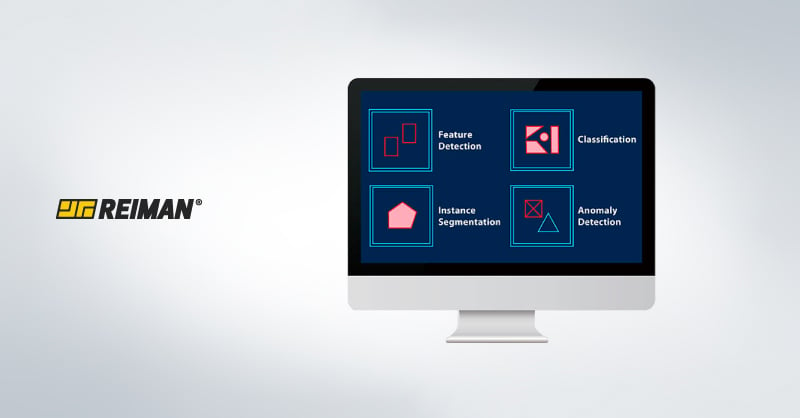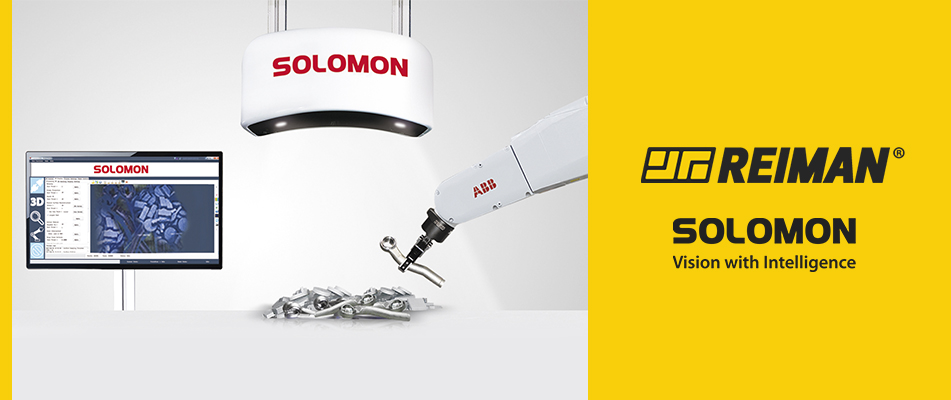We use cookies to make your experience better. To comply with the new e-Privacy directive, we need to ask for your consent to set the cookies. Learn more.
Quality control with vision and artificial intelligence

When talking about artificial vision, the vast majority of people think of futuristic technology. In fact, there are still long steps to go and, consequently, many developments to come, however, what most people don't know is that this technology already plays a very important role in industrial processes.
The same concerns to the interpretation that is made about artificial intelligence. Although we don't realize it, we are surrounded by artificial intelligence in our routine, either through a refrigerator that tells us that it needs to be stocked or even in a car trip where we can communicate with it and ask it to show us a route, or even to change the color of the interior lights.
In general, both systems are programmed and trained to fulfill specific tasks. In most cases, artificial vision collects a number of images and data and emits a stimulus so that through artificial intelligence these data are analyzed and, later, the orders are given to the robots that work together with these systems. Yes, they are systems that work together with robots, once they collect the information and emit what is necessary to do, but there must be someone to do it. In the beginning, the integration of these technologies was done with human labor, but with technological developments, it is possible to program certain tasks so that they are fully automated.
In industrial activity, both systems have played a very important role regarding the most varied production processes. Combining these two technologies brings immense advantages and optimizes any productive sector. One of the processes that require the most care is undoubtedly quality control and for this same reason, these technologies have been increasingly implemented to perform functions in this sense.
Often, there are small details that escape from the human vision and this can put many variables into question. Either because it is a food product that has a damaged component, or because a water bottle is not sealed, these are details that have to be all seen and reviewed so that there is no problem in delivering to the customer. Here come the vision and artificial intelligence systems that can reach these and many more details that otherwise would be unreachable.
In order to continue providing improved solutions, Solomon has created Solvision - the system that integrates vision and artificial intelligence for effective quality control.
Solvision is a software that has the ability to detect defects, anomalies, and irregular patterns that other systems of the same type are unable to.
Main functions associated:
- Segmentation- Solvision is able to segment the analyzed objects based on the data it has collected and divide them into lines such as: "Good state" "Bad state" - or others that are necessary.
- Detection- It can detect scratches, stains, holes, and any kind of deformations or intrusive materials.
- Classification- It has the ability to create categories to classify objects under analysis so that no analysis component fails.
It is possible to use all these features at the same time or choose only one.
Possible applications:
- Registration of deformed objects
- Detention of anomalies
- Classification of standards
- Quick Identifications
- Barcode and QR Code Analysis
- Human detection and tracking
Associated to all these processes are numerous advantages that you can enjoy when choosing the Solvision quality controller:
Speed
One of the main advantages that must be highlighted is the fact that Solvision is able to carry out all the processes already shown much faster than any other system. This makes the productivity level much higher in a short period of time.
Simplicity
It is not necessary to program a lot of things, only in one program it is possible to indicate to the scanner what functions it should perform. Besides this, the programming process is quite simple and intuitive, which dispenses the reading of endless manuals.
Information registration
Solvision has an extra that most systems of the same type don't have: data registration. It is possible to download all the analyzed data to a computer and this way it is possible to make analyses, comparisons and even reports.
Accuracy
This system will be able to identify subtle details that would be unreachable to the human eye.
Versatility
Finally, it is important to mention that this system supports more than twenty brands of robots and that is why each user can choose which solution best suits their preferences and needs.
For more information, please contact Reiman's specialized team.


